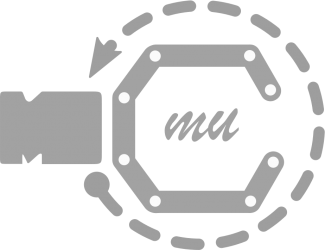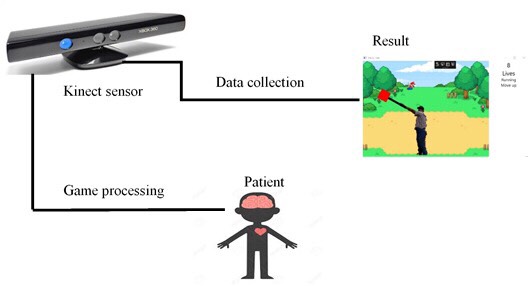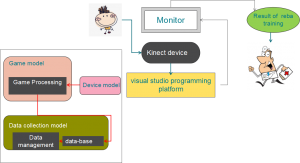by Peng Nan, Master. student
Advisor: Assoc. Prof. Dr. Theeraphong Wongratanaphisan
Description of Project:
Traditional way of upper limb rehabilitation to use upper extremity rehabilitation equipment for training the proximal upper extremity movement functions. They are essential tools in the occupational therapy (OT) practice. Most existing clinical provides no feedback to the patients. Patients may find that repeating the same activity can be boring and monotonous and thus develop a negative attitude toward the therapy process. In order to increase the mental satisfaction and physical vitality of rehabilitation therapy, some therapists have using off-the-shelf video game systems in rehabilitation. Digital games have been proven effective in upper extremity rehabilitation for patients in addition to arousing higher motivation and feelings of pleasure.
The Kinect operates in real-time, it is different from traditional physical-based equipment, there is no need to carry any sensor on the body, and the player only needs to face Kinect lens, and the chip inside it will then calculate the joint information of the skeleton of each player. This technology allows user images to appear in the stimulated environment and presents an interactive interface. The technology of creating real-time computer simulated environment for the user is known as Virtual Reality. Conventional methods of rehabilitation being monotonous and barely followed by patients, so the Virtual Reality based exercise game creates new rehabilitation approach. Conventional therapy does not provide feedback to the patients and hence no motivation. Exercise game delivers feedback to patients during gameplay and motivate patient to perform exercises in correct manner. Therefore, this study proposes Kinect based real time shoulder joint angle measurement and healthcare exercise game can be used for rehabilitation. The angle measurement application can also be used as an alternative method for measurement of shoulder flexion and abduction angles.
Objective:
- To evaluate the performance of Kinect sensor for use in rehabilitation task.
- To develop a computer program using Kinect sensor for human upper-limb exercise.
Kinect-based Interactive Games overview:
The program user interface is shown in Figure 1. There are two users of the system: The first user is the patient. The patient plays the game in front of the Kinect device. The patient’s data are then streamed to the developed system for game processing and data recording. The patient can see own images in the virtual world from the monitor screen during playing game. The game is designed to make the patient perform game tasks that encourage movement of one arm in prescribed motions that help rehabilitation progress. The second user is the operator (physiotherapist). The operator will perform setting-up task such as input patient’s data into the system, review the patient’s previous record of treatment and make a judgment for the current treatment though game difficulty level. After the rehabilitating session, the operator review the outcomes of current treatment returned from the program in the form of game score. The operator then makes judgement on the pan of next rehabilitating session.
The system is designed according to the following features:
- Simple user interface: the software should have a simple user interface, which is clear, simple to use at first sight, and has unambiguous meaning for the user.
- One patient for one-time period: during the practice only one person was standing in front of the Kinect sensor, only his/her movement should be processed.
- Therapist-assisted set-up: the software is set up by the therapist adapted to the patients’ needs and the therapist controls the whole practice. The control of the program is not the patients’ task.
- Data review and record: after every treatment session the opportunity to save the results should be provided. The saved quantitative data should include the date, the concrete tasks, with how many repetitions and how many successful repetitions the patient completed the tasks, game score, the range of joint angle movements in order to monitor the progress of the system.
Publication:
- Peng Nan and Theeraphong Wongratanaphisan “Kinect-based Interactive Games with Joint Measurements to Assist Upper Limb Rehabilitation”; The 12th International Convention on Rehabilitation Engineering and Assistive Technology 14-16 July 2018 in Shanghai, China.
Acknowledgement:
This work was partially supported by Chiang Mai University.


